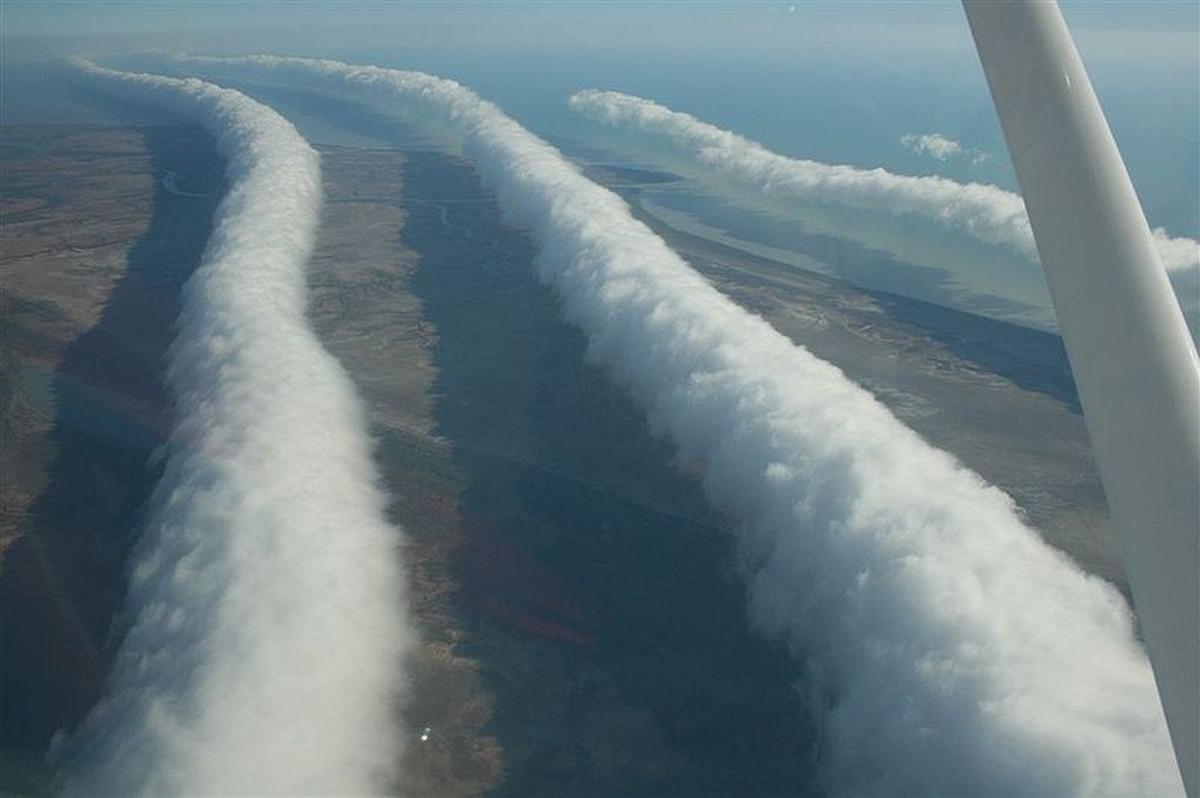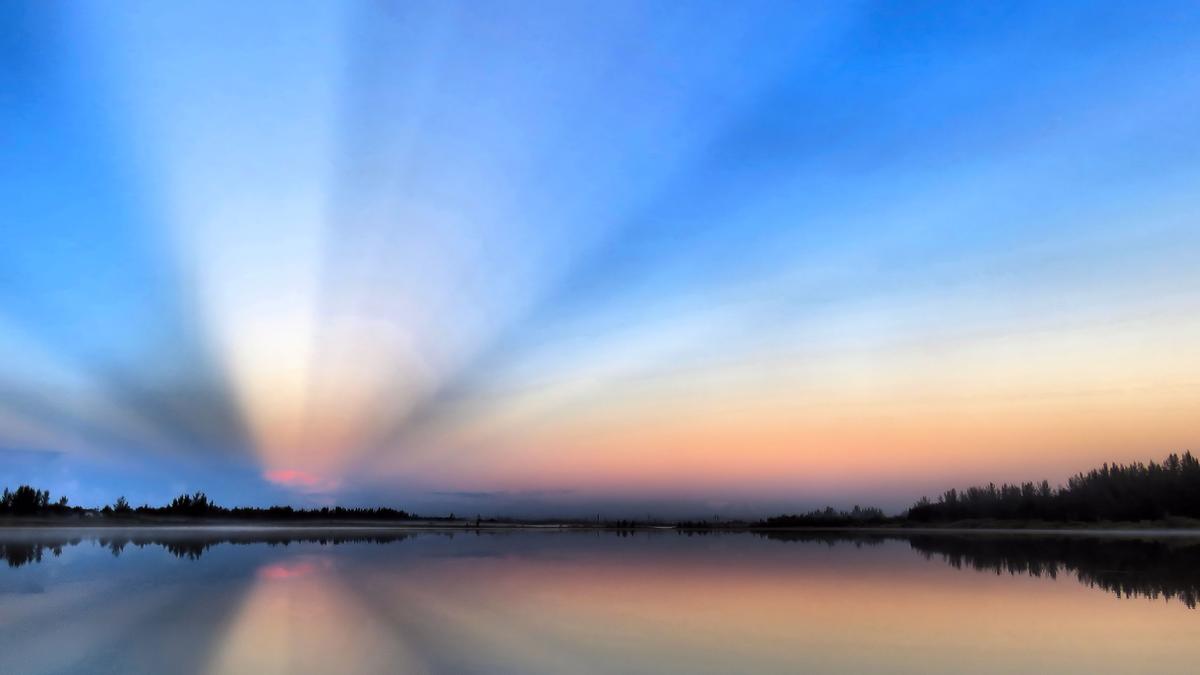The planet’s skies and seas have seen much more than any of us combined, more than the average weather forecast can predict. These rare, questionable phenomena leave not just us baffled, but also meteorologists questioning what is real and what is magic. Let us explore just what more nature is capable of showing us.
False sunrises and sunsets
Mother Nature often likes to play pranks on us, and she does so with her fake sunrises and sunsets. A fake sunset happens when: (1) the Sun appears to be setting into or to have set below the horizon while it is still some height above the horizon, or (2) the Sun has already set below the horizon, but still appears to be on or above the horizon.
Similarly, a fake sunrise occurs when the Sun appears to have risen, but is still a little below the horizon. Atmospheric circumstances like the reflection of the sunlight from the bottom of the clouds, or a simple mirage, could cause these false sunsets and sunrises.
Moonbows
Moonbows
| Photo Credit:
SPECIAL ARRANGEMENT
If you thought rainbows could only be seen during the daytime, you thought wrong. Moonbows or lunar rainbows are rainbows produced by moonlight rather than sunlight. It forms the same way as a rainbow in the daylight does: sunlight refracting through droplets of water. It is positioned opposite the Moon.
Moonbows are fainter than solar rainbows because the Moon can reflect only a small amount of light from the Sun. They are usually visible during the brightest full moon. For the most perfect moonbow, the Moon must be low in the sky (usually 42 degrees or lower) and must not be obscured by clouds. Additionally, the night sky must be exceptionally dark.
Moonbows can be found across the U.S., in places like the Niagara Falls, New York, and in some regions of Hawaii. The cloud forests of Costa Rica are also known for moonbows.
Animal rain
You may be familiar with the saying “raining cats and dogs”, but we all know that cannot happen in a literal way… or can it? In fact, what if you were told that there have been instances where it actually rained animals recorded since ancient history? It’s true!
Back in the first Century A.D., Roman naturalist Pliny the Elder documented a storm of frogs and fish. Years later, in 1794, French soldiers saw it rain toads near the city of Lille.
Some people see this phenomenon regularly. Rural inhabitants in Yoro, Honduras, claim that every summer, it rains fish in a phenomenon they call Lluvia de Peces (transl. “Rain of fish”).
Now, let’s revolve around a theory that explains why this could happen. One hypothesis suggests that natural phenomena like tornadoes and waterspouts often tend to carry birds and animals for several miles due to their high-speed winds. Although this theory has not been confirmed. Some cases could also be caused by birds dropping fish mid-flight.
Volcanic lightning
Lightning flashes as Taal Volcano erupts Sunday Jan. 12, 2020, in Tagaytay, Cavite province, outside Manila, Philippines. A tiny volcano near the Philippine capital that draws many tourists for its picturesque setting in a lake belched steam, ash and rocks in a huge plume Sunday, prompting thousands of residents to flee and officials to temporarily suspend flights.
| Photo Credit:
Aaron Favila/AP
What do you get when you cross lightning with a volcanic eruption? The coolest thing anyone can ever see. Unlike common lightning, it occurs when particles of ash, rock, and ice collide violently during eruption. These collisions strip electrons from some particles and add them to others, creating an enormous electrical charge separation within the cloud. Once the imbalance grows too large, the energy is released as lightning.
It can be a tricky thing to study, but it’s not rare to see. The first studies of volcanic lightning were conducted at Mount Vesuvius during the eruptions of 1858, 1861, 1868, and 1872. Cases were also reported at Mount Etna in Sicily, Italy, Alaska’s Mount Augustine volcano, and the Volcán de Fuego in Guatemala.
Sprites
A Transient Luminous Event (TLE) known as a sprite is seen during a pass in the earth’s orbit over Mexico and the United States by the International Space Station.
| Photo Credit:
REUTERS
At first glance, it may look like an alien invasion with the red glow and the tentacle-looking figures. But that’s actually just a very rare type of lightning called a sprite.
Sprites are flashes of bright red light that occur above storm systems. It is named after the mischievous sprites in Shakespearean literature, i.e, Ariel or Puck, and is also an acronym for Stratospheric Perturbations Resulting from Intense Thunderstorm Electrification.
They are normally reddish-orange or greenish-blue, with hanging tendrils below and arcing branches above, and are preceded by a reddish halo, known as the sprite halo.
They were first captured when scientists from the University of Minnesota accidentally caught an image of what would be called a sprite. This was 1989. Since then, they have become a subject of intense investigations. They were also seen during Hurricane Matthew’s passing through the Caribbean in 2016.
Light pillar
Pillars of light, which are optical atmospheric phenomena, beam up from the ground into the sky behind residential buildings in Omsk, Russia, January 2, 2023. REUTERS/Alexey Malgavko TPX IMAGES OF THE DAY
| Photo Credit:
REUTERS
You may have heard of the famous northern lights, but there are more light shows where that comes from.
Light pillars or ice pillars are an atmospheric optical phenomenon in which a vertical beam appears to extend beyond a light source.
The effect is created by the reflection of light from tiny ice crystals that are suspended in the atmosphere or those that form high-altitude clouds. Light pillars can also be caused by the Moon, or even man-made sources like streetlights.
There have been reports of this phenomenon in Central Alberta, Canada, and even in Alaska. These places are usually snowy and hence frequently have this kind of a light show.
Morning Glory clouds

A Morning Glory cloud formation between Burketown and Normanton, Australia.
| Photo Credit:
WIKIMEDIA COMMONS
Clouds that are close to the ground? And that are the size of the Loch Ness monster? Yes, people! These exist. The Morning Glory cloud is a rare phenomenon which involves a low-level atmospheric wave and an associated cloud. The wave occurs as a series of waves forming roll ball clouds. Sometimes there is only one cloud, sometimes there are up to ten consecutive roll clouds.
The average Morning Glory cloud can be up to 1,000 kilometres long, 1 to 2 kilometres high, and only 100 to 200 metres above the ground, which means if you’re tall enough, you’ll LITERALLY have your head in the clouds!
Published – October 07, 2025 05:30 pm IST
